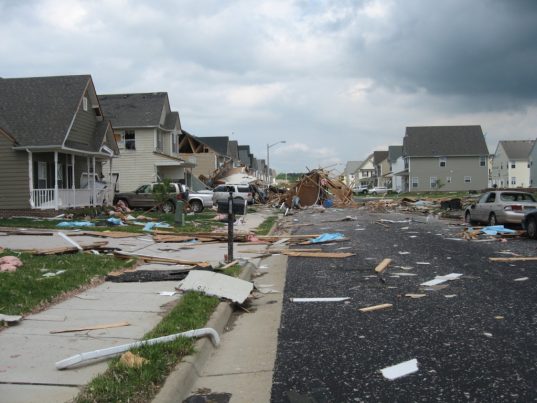Considerations when deciding to bug out or hunker down
Wednesday, September 05, 2018 by Edsel Cook
http://www.bugout.news/2018-09-05-considerations-when-deciding-to-bug-out-or-hunker-down.html

To bug in or to bug out? That is the question that all preppers ask themselves when deciding upon their main survival strategy in an emergency. An article in The Survivalist Blog covered the pros and cons of both options while stressing the need to keep options available.
A man’s home is his castle
Bugging in means staying put in your home or property during a disaster. Therefore, you would strengthen this place by amassing supplies and improving the security.
The familiar surroundings are one reason why preppers choose to bug in. It is easier, quicker, and safer to just head back home rather than take your chances in the chaos that follows a disaster.
Another advantage is the assured availability of a shelter in the form of the structure you live in. A standing structure is safer than a temporary one, especially if it is made of sturdy materials.
However, your shelter is also vulnerable to powerful disasters like avalanches, fires, floods, hurricanes, landslides, mudslides, and tornadoes. It can also be attacked by hostile humans who want to seize your supplies.
Take the effort to improve the supplies and security of your home. But always be prepared to evacuate if staying put becomes too dangerous. (Related: Maintaining survival sanitation when you bug IN.)
Getting out of Dodge
Bugging out is the opposite of the above. You have prepared a location as far away from your home as possible. This shelter has enough supplies to keep you alive for many months or years.
When a crisis takes place in the area you live in, you will get your bug-out bag and head to that distant shelter. You will stay there until it is safe to come back.
If if takes days or even weeks for the crisis to arrive or escalate, bugging out is a good idea. It might seem cowardly, but waiting to see what happens might get you trapped or even killed.
This holds doubly true if you live in a population center or near it. You do not want to risk hostile humans to learn about your supplies and target you.
You must know every possible route to your shelter. This includes paths that are not on the map so that you can bypass traffic problems. You must also carry enough supplies to sustain yourself during the trip.
Bugging out entails much more effort and greater risk. However, if executed correctly, it may very well save your life.
It’s not about “bugging in” or “bugging out,” but “being prepared”
Your choice of bugging in or bugging out depends on your situation. If you think your shelter can withstand a crisis, bug in. If you fear your home will not survive a disaster, bug out.
Preppers who choose to bug in must have the skills and tools to repair their home. They must also prepare for the threats posed by other people. Finally, they have to manage their supplies.
Those who decide to bug out must thoroughly plan their evacuation. This includes having a back-up shelter in case the first one is unreachable or unsafe, or what to do if accosted by the police or the military.
When the crisis comes upon you, consider your options carefully. A hurricane and an earthquake are both devastating events, but they have very different characteristics. You can bug out or bug in before a storm hits, but a quake will catch you off guard.
Last but not least, do not stop or slack on your efforts. Be it bugging into your home or bugging out of a disaster zone, you need to make sure your plan will work.
You can get tips on bugging out at BugOut.news.
Sources include:
Tagged Under: Tags: bug in, bug out, bugging in, bugging out, crisis, disaster, preparedness, Preppers, prepping, survival, survival and preparedness

